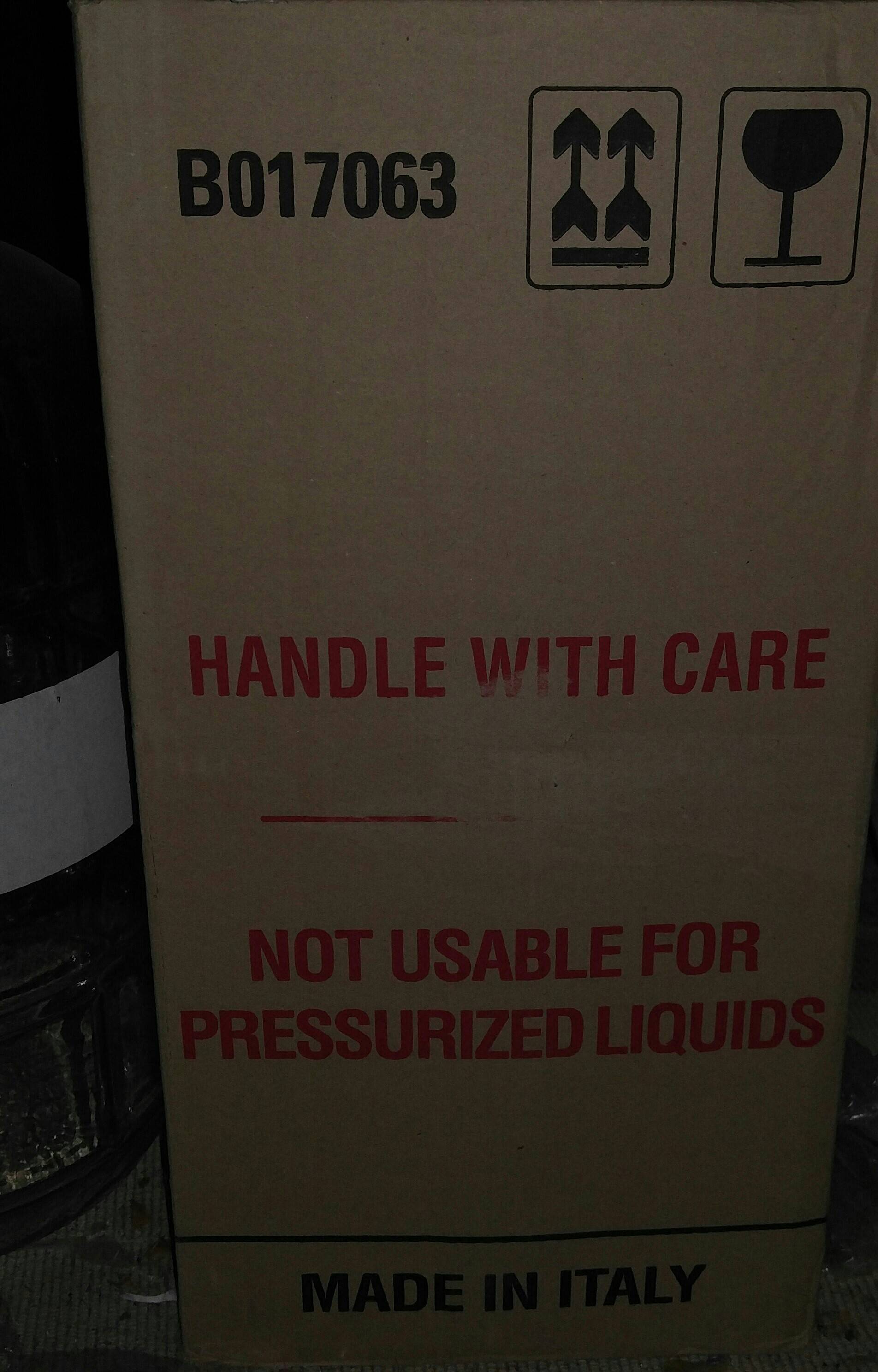Like above, I've found corney kegs to be a great sealed aging container.
Couple notes.
I wouldn't allow any pressure in any glass carboy. Below is box from 6gal Italian glass carboy.
 !
PSI is pounds per square inch. Conditioning and secondary can easily make 2 bars, about 27psi. Because of the surface area a carboy would fail at a fraction of that. Plastic PET fermentor should be ok, keeping a plug in may be difficult though. It can pop out under pressure or even suck into the fermentor on a temp drop.
!
PSI is pounds per square inch. Conditioning and secondary can easily make 2 bars, about 27psi. Because of the surface area a carboy would fail at a fraction of that. Plastic PET fermentor should be ok, keeping a plug in may be difficult though. It can pop out under pressure or even suck into the fermentor on a temp drop.
I wouldn't use just water as an airlock fluid, use a sanitizer or vodka and keep it fresh. If the fluid becomes contaminated, along with temp drop it can bell siphon the fluid into the beer.
If it's going to be unattended for a long time I would use a tube and a 1/2 gallon sanitizer bottle. A small airlock may go dry.

As far as the condition of the beer after several months. Its best to age beer off the primary yeast if the style calls for aging. Some styles are best fresh, IPA for example. Some ales and lagers can benifiet from several months of aging. Several months in a proper fermentor will do nothing "harmful", but may not age into what is true to style.
 !
PSI is pounds per square inch. Conditioning and secondary can easily make 2 bars, about 27psi. Because of the surface area a carboy would fail at a fraction of that. Plastic PET fermentor should be ok, keeping a plug in may be difficult though. It can pop out under pressure or even suck into the fermentor on a temp drop.
!
PSI is pounds per square inch. Conditioning and secondary can easily make 2 bars, about 27psi. Because of the surface area a carboy would fail at a fraction of that. Plastic PET fermentor should be ok, keeping a plug in may be difficult though. It can pop out under pressure or even suck into the fermentor on a temp drop.